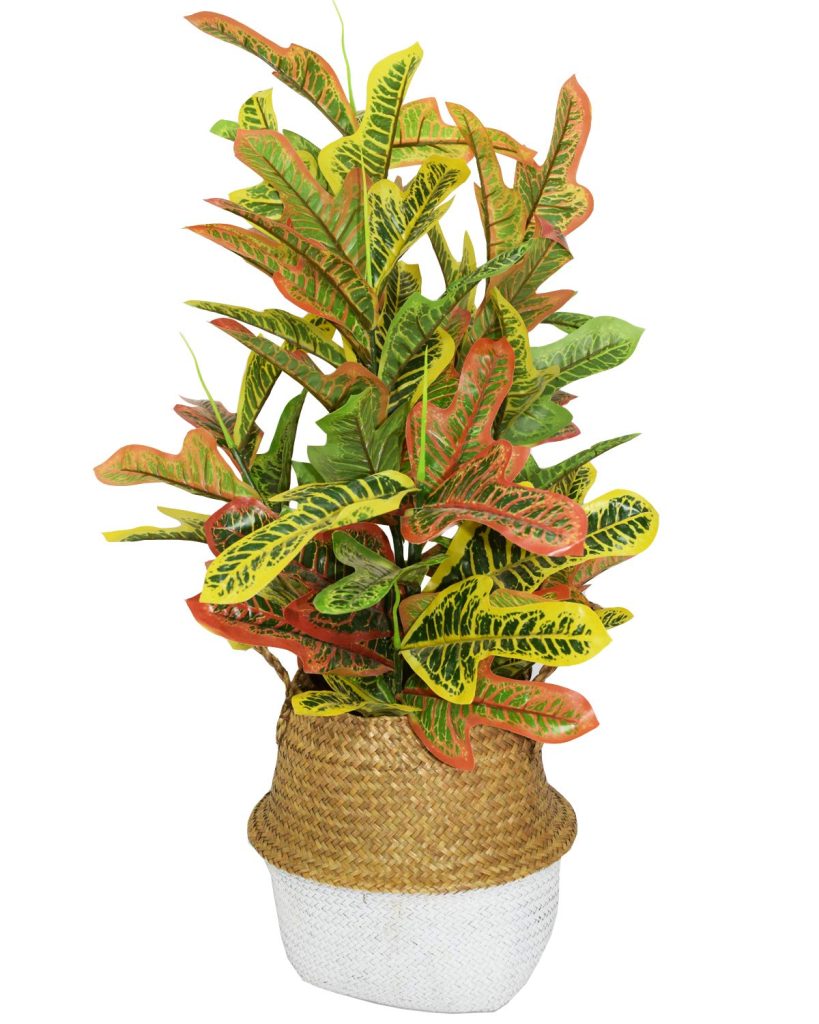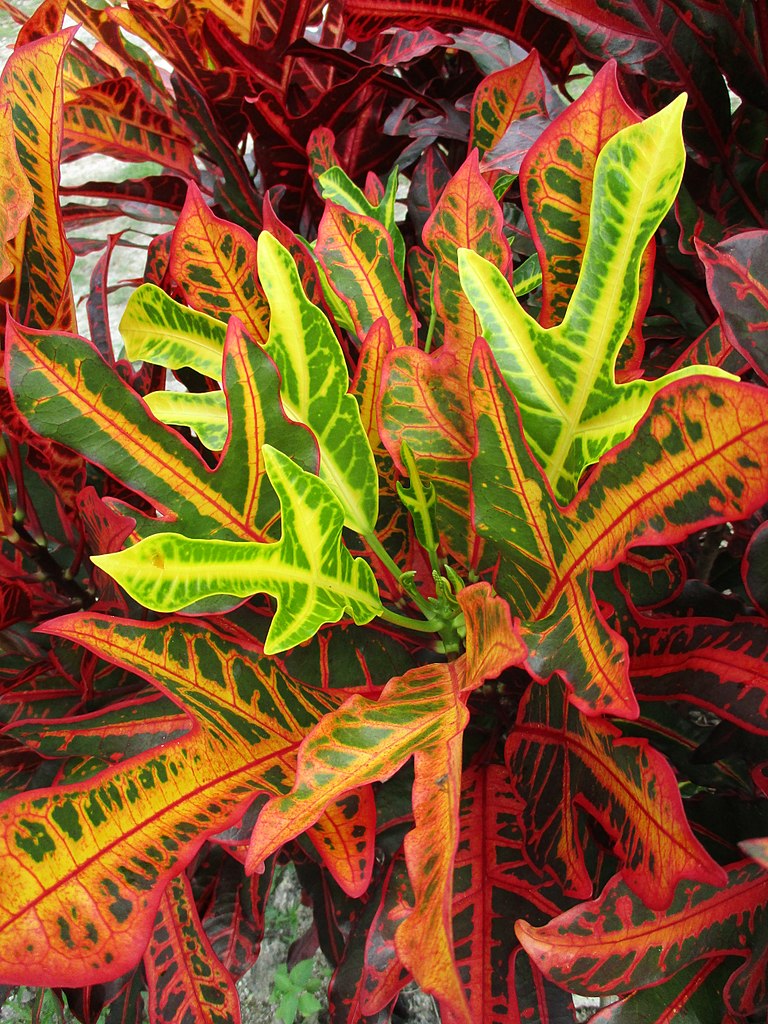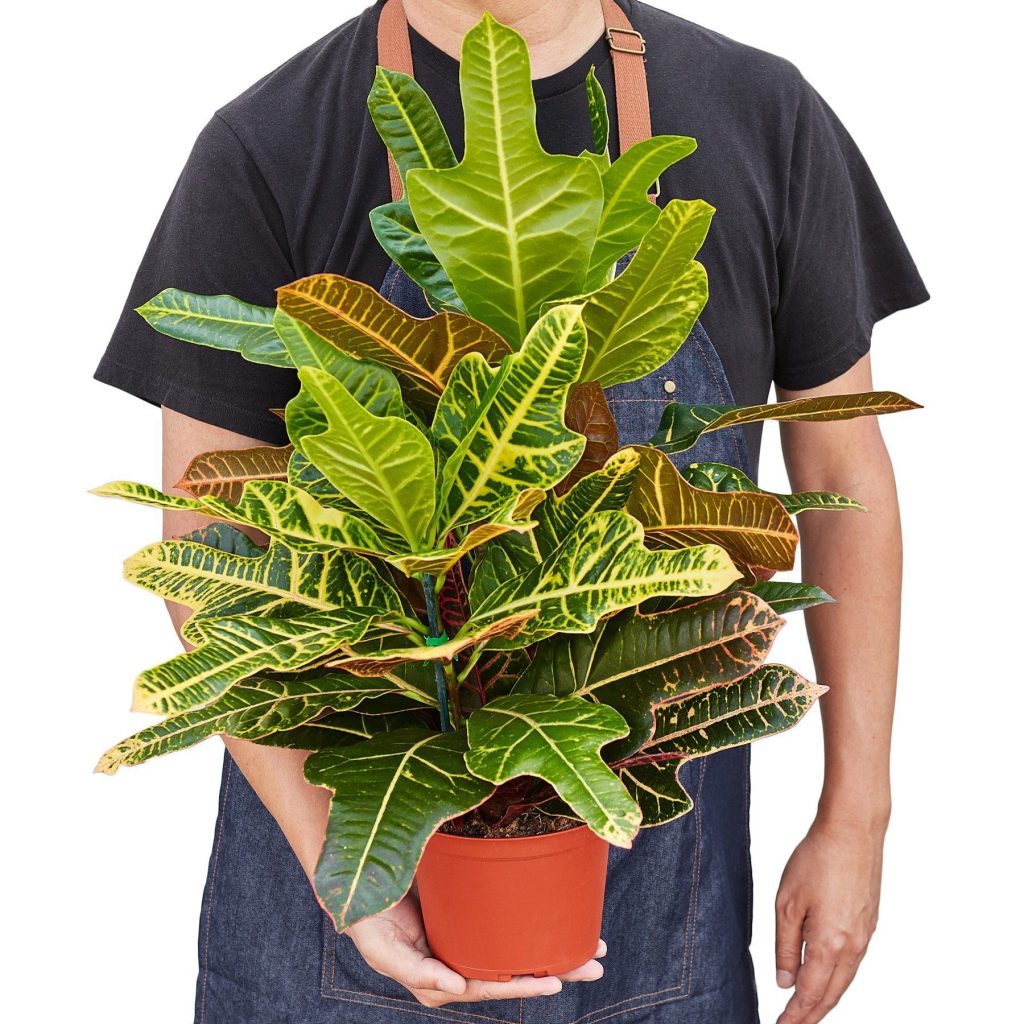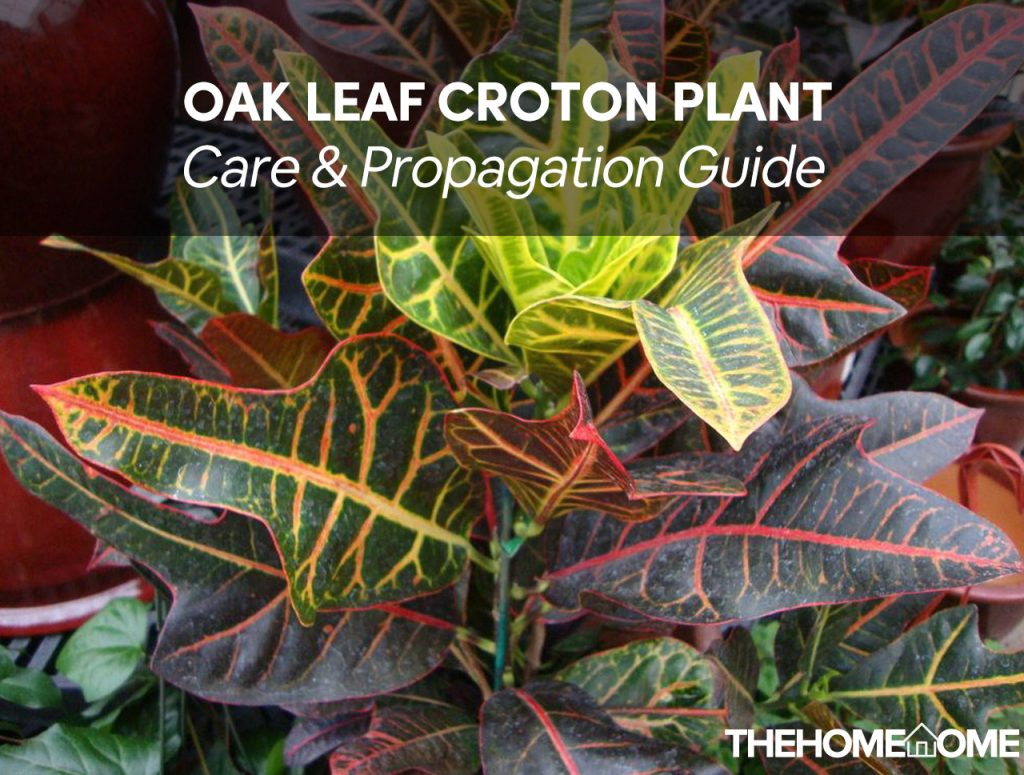Known for its elegance and lushness, the oak leaf is a croton houseplant species. This croton is a variegated plant that starts growth with a green color and gradually becomes lined with yellow veins but eventually bursts into different lovely hues such as red, burgundy, and green, and the combination produces a stunning splash of colors.
Its name comes from its similarity to an oak tree, and the leathery appearance of the leaf creates an astonishing and unusual appearance.
Northern Australia, the Pacific Islands, and Malaysia are home to oak leaf croton. It thrives in semi-shaded patios and requires only moderate but consistent watering. It grows well in shrubs and open forests take a long time to mature, but can reach a height of 24″ and a width of 20”.
Here you can find everything you need to know about the oak leaf croton. Read this to learn how to properly care for your croton and achieve the desired outcomes.
Oak Leaf Croton Plant Basic Information
Like the others, the oak leaf croton is picky about its soil, hydration, and even multiplication. In a favorable habitat, the oak leaf croton will blossom to its maximum potential and bring forth its beauty if properly cared for.
| Plant name | Oak Leaf Croton |
| Botanical Genus | Codiaeum Variegatum |
| Plant family | Euphorbiaceae |
| Plant type | Perennial |
| Origin | The Pacific Islands, Northern Australia and Malaysia |
| Classification | Tropical Plant |
| Light | Bright Indirect sunlight |
| Size | 7”- 9” tall |
| Soil type | Well-drained soil |
| Toxicity | Highly toxic to humans and pets |
| Watering | Regularly |
| Foliage Color | Yellow, Burgundy, Orange, Green and Red |
| Fragrance | Non-fragrant |
| Propagation | Air layering, Stem Cutting |
Propagating The Oak leaf Croton
It takes a minimum of about two months to have the desired result from propagating croton. Like other crotons, the stem cutting and air layering methods are very effective for the propagation of these houseplants. Propagation of this houseplant is something you can try out if you desire to gift someone.
You will simply multiply this croton with this method. If you have ever wondered how the propagation of the oak leaf croton is being done, you need to check this out.

Items Needed For Propagation:
- Mature and healthy Oak leaf Croton
- Sphagnum peat moss
- Plastic wrap
- A sanitized, sharp shears
- Rope or electrician’s tape
The Oakleaf Croton’s Propagation Procedure.
This is a step-by-step guide on propagating the oakleaf Croton houseplant via air-layering:
- Step 1: Make a skin cut into the oakleaf’s stem.
- Step 2: Remove the stems from the skin cuts.
- Step 3: Combine the soil with sphagnum peat moss.
- Step 4: Apply the blended soil to the stem’s wounded area.
- Step 5: Wrap both sides of the plastic wrap around the soil and secure with rope or electrician’s tape.
- Step 6: Take a break for at least 30 days or more (about a month and a half should do). By that time, the roots would have emerged.
- Step 7: Once the plant has roots, remove it from the plastic wrap and set it in a lovely container like any other plant.
Oak Leaf Croton Plant Care Guide
To get the finest results from your oak leaf croton, you need to learn how to properly care for it. Practical techniques to acquire the finest intended result from cultivating your oak leaf croton are detailed below.
1. Watering
The importance of watering your plant’s growth cannot be overstated. You should water your leaves once a week at the very least. Place your land on the soil or dip your finger into the soil to see if it is dry and to see if your plant needs water.
However, it is preferable to use less water than to use too much, as too much water could create root rot, which will cause your plant to stink and possibly die.
You should also keep in mind that if your croton is in a low-light setting, you may not need to water it as frequently as you would if it were in a bright light environment or direct sunlight.

2. Light
The oak leaf croton grows well in a slightly shaded patio. The croton should not be maintained in direct sunlight or kept in the house without being exposed to the sun. If the sunshine exposure is excessive, the leaves will bleach, and if the sunlight exposure is insufficient, the leaves will turn green.
3. Pruning
You should prune your oak leaf croton regularly to keep it from becoming bushy, as well as to remove sickly leaves and keep them in form. However, pruning with the appropriate equipment and in the proper manner is more vital. Make sure to clean anything you’ll be using, and keep the sap away from your skin to avoid irritation.
4. Temperature
The Oak Leaf Croton Plant cannot tolerate chilly temperatures. It prefers warm climates, therefore if you live somewhere freezing, you should plant your croton in a container, so you may bring it inside from time to time. However, you should use caution when moving around, as this may give your plant discomfort.
5. Humidity
Because the oak leaf croton is a tropical plant, it prefers moist, not dry air. It does best in a warm atmosphere that is neither too hot nor too cold. In the winter, a humidifier is useful for keeping the moisture on the plant. Just make sure the humidifier is properly calibrated, so it doesn’t harm the plant.
6. Soil
The soil should be kept moist at all times, but not over-watered. The nutrients you utilize to feed your plant from your soil are also important. The soil used should have a neutral pH, and well-draining soil does wonder for your croton plant, especially the oak leaf croton.
7. Fertilizer

Fertilizer is a must if you want your croton plant to develop faster and healthier. Your croton’s growth will be aided by these nutrients. When applying fertilizer to your croton, make sure to follow the instructions carefully to achieve the best results, and use nutrients that will not harm your croton’s growth.
Oak Leaf Croton Plant Growing Tips
Our gift to you, a couple more things to note when propagating the oak leaf croton plant.
- Watering your oakleaf croton regularly might not be ideal. Simply look to see if the soil is dry or if your leaves are drooping to determine whether or not your croton requires water.
- Repotting your plant is very important. When you see that your plant is becoming larger, you may need to modify the size of your pot once or twice a year.
- In low-humidity regions or during seasons when the humidity isn’t ideal for your plant’s growth, a humidifier might help it thrive.
- Water the soil of your oakleaf croton, rather than the leaves. Even while watering your soil, moderation is required.
Oak Leaf Croton Plant Parent FAQs
Not a lot of questions were asked but in case you were wondering:
Can I keep my oak leaf croton plant outside?
Yes, of course! Outside, you can plant your oak leaf, but only in tropical settings. Because the croton houseplant cannot withstand freezing, placing it outside during the winter or in icy conditions will make growth difficult and eventually stunted
Do croton plants have flowers?
Yes. Flowers bloom on the croton houseplant. These flowers are lovely yet insignificant, and they start as a bulb before spreading out. They also don’t stay on the plants for long periods and only show up on mature crotons.
Final Thoughts
The shape and splash of colors on the oak leaf make it appealing to the eyes. Without this gorgeous plant, your interior décor or even planting in your gardens or front yard may be incomplete. The purchasing of this plant is only the beginning.
You’ll need to understand how to properly care for it, as well as how to multiply your houseplant. They are odorless flowers that can cause harm to the human body, including the skin and digestive system if ingested or handled carelessly.
For this reason, we recommend using caution when caring for them, avoiding direct contact, and keeping them out of the reach of children and pets.
More croton variety guides:

